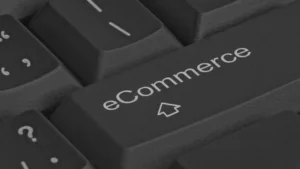Do You Really Know if Your Website is Accessible?You say your website is accessible. It has captions on the videos, keyboard navigability, and a clean layout. But how do you know your site truly provides an excellent accessible experience that meets legal standards? The answer lies in certification. Use this comprehensive guide to work towards credible independent certification and promote your brand as an accessibility leader.
Understand Benefits of Website Accessibility Certification
Pursuing formal assessment demonstrates an organization-wide commitment to accessibility and provides recognized proof of meeting standards like WCAG 2.1. Certification offers a chance to:
- Comply with legal requirements protecting users with disabilities
- Show customers and stakeholders your accessible standards
- Stand out with an accessibility-first reputation
- Identify gaps for improving user experience
- Qualify for government contracts requiring certification
Choose a Reputable Certifying Body
Several organizations provide site accessibility audits and certification. Look for an established group with independent evaluators following WCAG 2.1 methodologies. Some top options include:
- WebAIM WAVE (Web Accessibility Evaluation)
- Bureau of Internet Accessibility (BIAG)
- UserWay Accessibility Certification
- The Accessibility Foundation (TAF)
Consider business needs, eligibility criteria, certification process, credibility, maintenance requirements, and costs.
Audit Existing Accessibility Practices
Before seeking formal certification, assess current accessibility implementations on your site using advice from reputable sources like W3C or WebAIM. Identify areas meeting vs. needing improvement per WCAG standards in categories like:
- Website structure/navigation
- Text alternatives for visuals
- Color contrast
- Page layout/readable displays
- Keyboard support
Be detailed! Flag specific non-compliant pages and features. This audit provides the roadmap for achieving certification.
Create Internal Resources for Ongoing Compliance
Assign dedicated staff and develop processes for continual review and issue resolution. Provide accessibility guidelines, testing tools, assistive technology, and training to content teams. Confirm all new features and redesigns address standards early in development before public release.
Remediate Accessibility Issues
Resolve known problems flagged in earlier audits. Follow techniques like descriptive alt text, transcriptions for multimedia, logical page structure using proper heading tags, sufficient color contrast ratios, contextual link text, focus indicators, ARIA tags for complex widgets, and more.
Retest Thoroughly Before Applying for Certification
Conduct another comprehensive audit using both automated checkers and manual assistive technology testing to catch remaining issues. Testing methodology should align with the certification program’s criteria. If problems persist, continue remediations and recheck.
Compile Accessibility Assets for Auditors
Certifiers analyze documents outlining policies, processes, testing results, issue trackers, staff training, and remediations. Draft an accessibility statement detailing compliance commitments. Create guides for ongoing internal and third-party contributor review. Demonstrate enterprise-wide dedication to equitable access.
Complete Independent Certification Process
With robust accessibility evidence and practices established, engage with the selected program. Application steps vary but often include scoping project parameters, compliance self-assessments, document submissions, interview questions, auditor site reviews, and more. Participate cooperatively as evaluators verify website’s WCAG conformance.
Proudly Display Certification and Promote Efforts
Upon earning certifier designation after meeting standards, add badges and statements to website pages. Actively highlight achievements in communications and marketing content using images showing diverse users. Maintain practices through scheduled re-testing to renew status when required.
Staying Accessibility Focused for User Benefit
Gaining recognized WCAG certification takes concerted effort but offers tremendous benefits for both organizations and site visitors. Prioritizing equitable access for users with disabilities is the ethical choice and often legally required as well. Follow this guide to promote your brand as an accessibility leader! Please let me know if you have any other questions.



